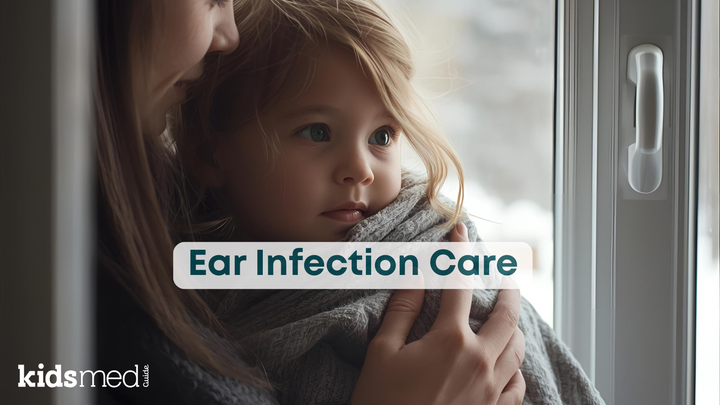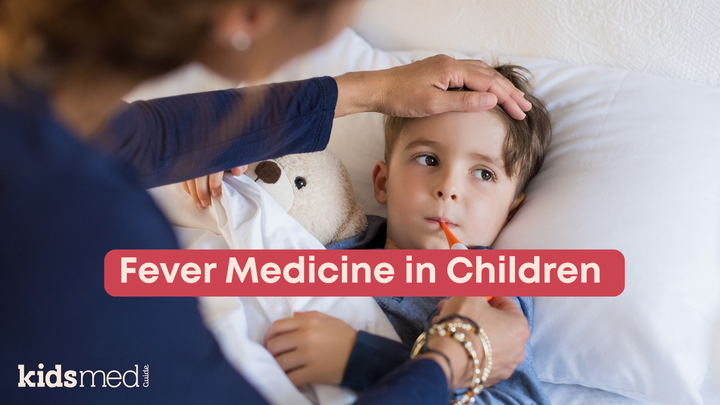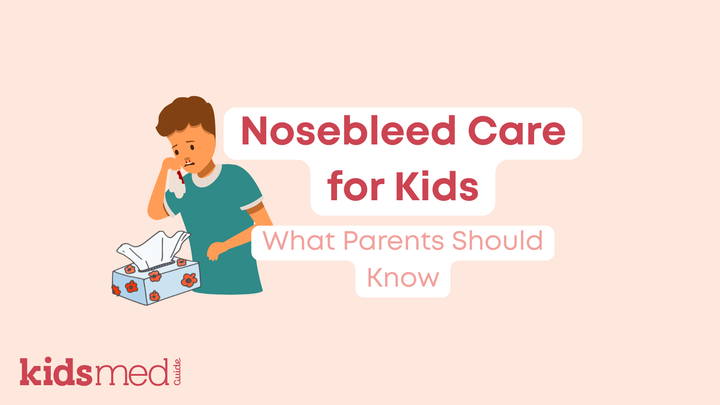Safe Antibiotic Use for Strep Throat and Other Fall Infections
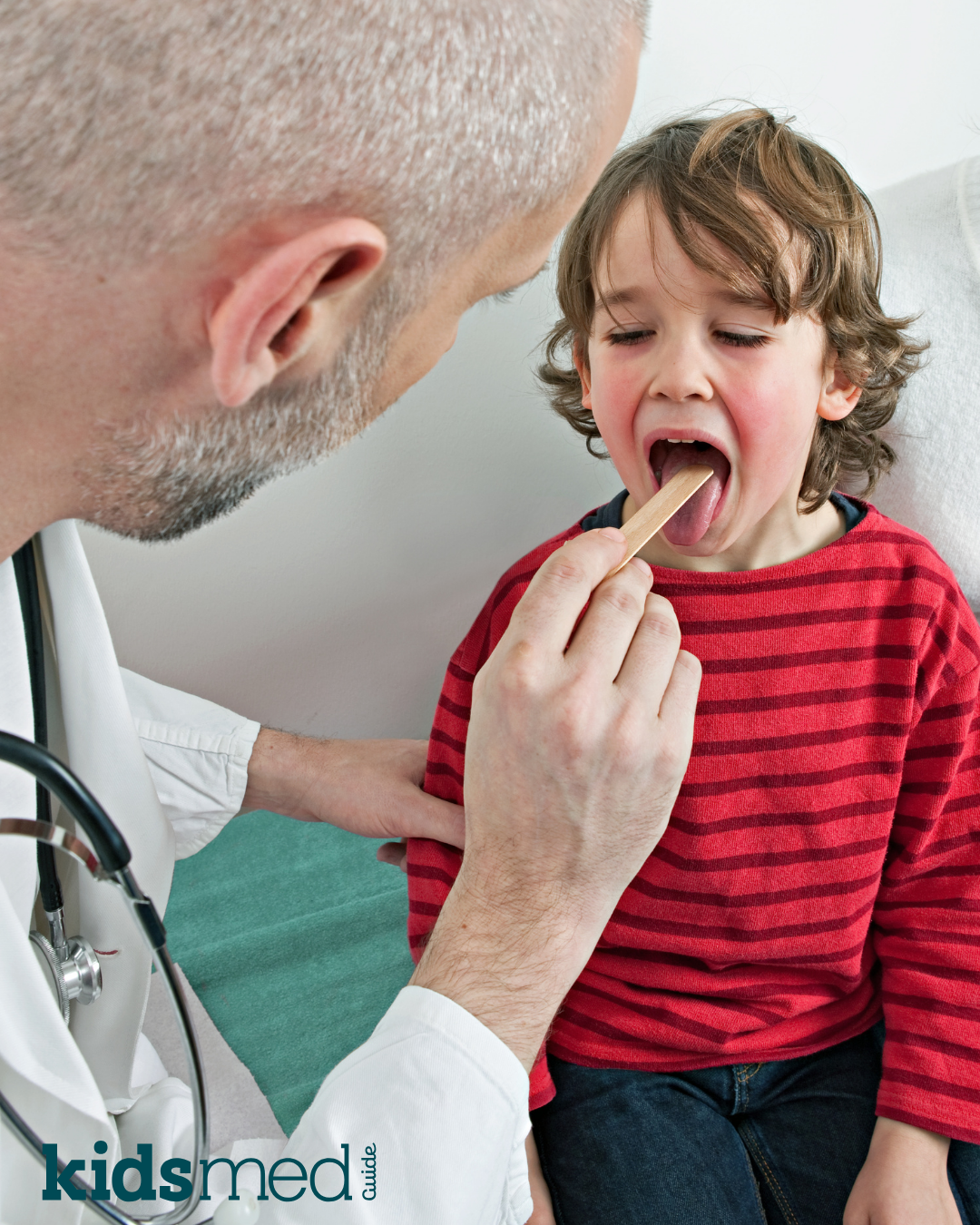
When the weather turns crisp and kids head back to school, it seems like germs throw their own welcome-back party. Runny noses, sore throats, and coughs start spreading faster than a bag of Halloween candy. One of the most common causes of illness? Strep throat in kids.
When parents hear “strep,” antibiotics often come to mind. I’m not going to lie... If I suspect one of my children has strep, I dial their pediatrician faster than you can say “amoxicillin.” But here’s the catch - not all sore throats are caused by strep, and not all sore throats need antibiotics!
This guide will explain safe antibiotic use for strep throat and other fall infections, and will help clarify why sometimes a doctor prescribes antibiotics, but other times they don’t.
Why Safe Antibiotic Use Matters for Children
Antibiotics are essential medications for bacterial infections. Strep throat is an acute bacterial infection that needs antibiotics to eliminate the disease.
But many fall illnesses—such as colds, the flu, and most ear infections—are caused by viruses, and antibiotics do not target viruses. Many viruses can cause a sore throat, so a red, irritated throat doesn’t always mean a bacterial infection, such as strep.
Using antibiotics unnecessarily can cause issues, such as:
- Antibiotic resistance: Bacteria learn to outsmart medications, making future infections harder to treat.
- Side effects: Upset stomach, diarrhea, or even allergic reactions.
- Unnecessary doctor visits and costs.
Safe and proper use will help treat bacterial infections, reduce side effects, and preserve the effectiveness of antibiotics for future use.
Understanding Strep Throat and Other Fall Infections in Kids
What is strep throat in kids?
Strep throat is a bacterial infection caused by the bacterium Streptococcus pyogenes, also called Group A strep (GAS). Kids often come down with a sudden sore throat, fever, and sometimes white patches on the tonsils. It spreads easily through sneezes, coughs, and shared water bottles (thank you, soccer practice).
Learn more in our Strep Throat in Kids guide!
Strep throat symptoms in kids
Besides sore throat and fever, parents might notice difficulty swallowing, stomach pain, headache, or unusual fatigue. Not every sore throat is strep, which is why it is important to have a doctor evaluate and test your child.
Other early fall infections are common in children
- Colds and viral sore throats: Caused by viruses, not bacteria. Antibiotics won’t help.
- Ear infections: Some are bacterial, but many resolve without the need for antibiotics.
- Flu or RSV: These illnesses need supportive care like rest and fluids. Sometimes, antivirals might be used, but antibiotics are not needed.
Antibiotics should only be used after a diagnosis of a bacterial infection from your child’s healthcare provider.
How Parents Can Know When Antibiotics Are Needed
The only way to know for sure if your child has strep throat is to test. Pediatricians may use:
- Rapid strep tests
- Molecular tests
- Throat culture
If the test is positive, antibiotics may be prescribed. If it’s negative, your pediatrician will likely not prescribe antibiotics, but may still send a throat culture to confirm that the rapid or molecular test was accurate.
Never give leftover antibiotics from a prior prescription or borrow medicine from another family member. It’s unsafe and often ineffective.
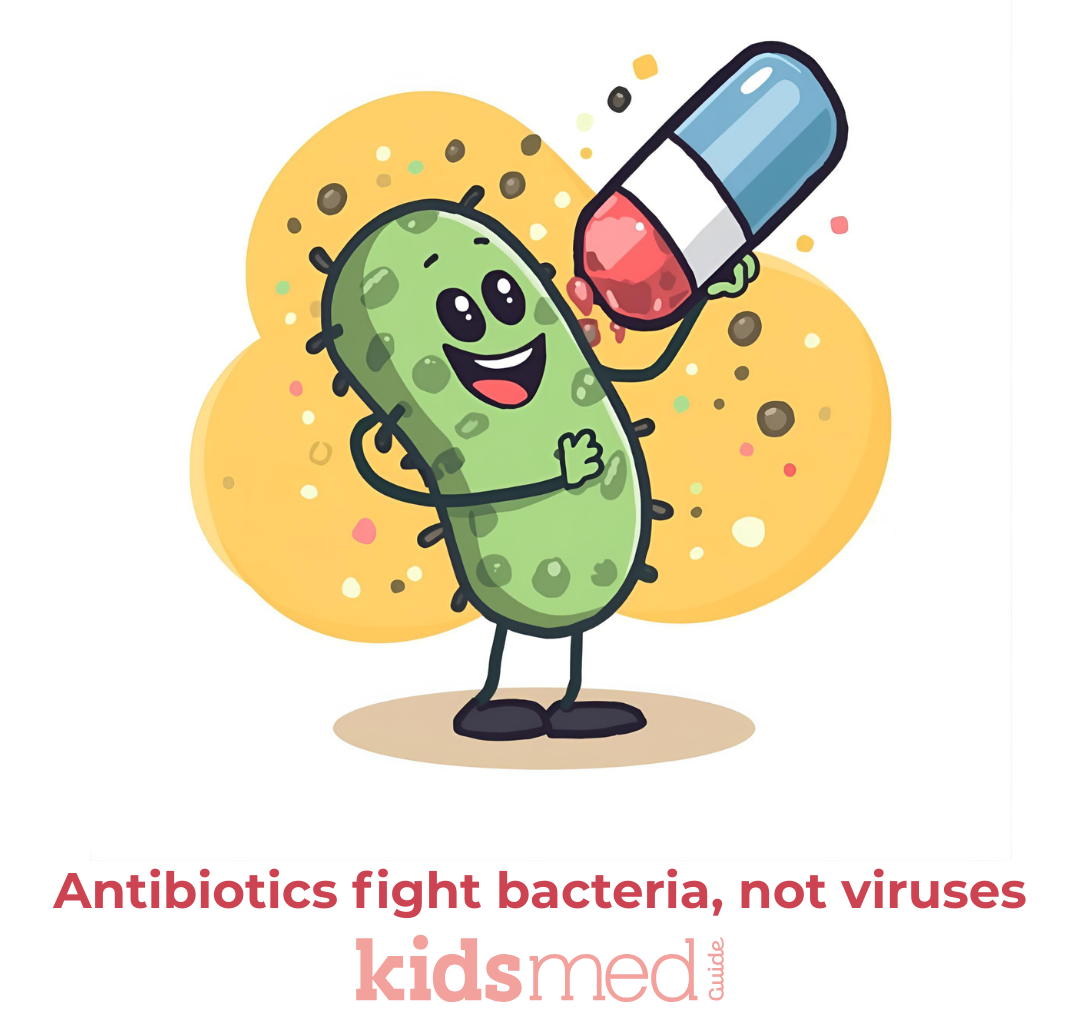
Using Antibiotics Safely in Children
How antibiotics work
Antibiotics fight bacteria, not viruses. They work in different ways but usually kill bacteria or prevent them from growing and reproducing. They target germs like the Group A strep bacteria that cause strep throat, but they are not effective against viruses at all.
Proper dosage and duration
If your child is prescribed an antibiotic, it’s essential to:
- Take the full course even if symptoms improve within a day or two. Bacterial infections can take a long time to eradicate.
- Give every dose on time. Missed doses can give bacteria a chance to regroup and potentially beat the antibiotic.
- Follow the prescription instructions closely. Dosing for antibiotics is based on your child’s weight, and they must get each dose as written.
Monitoring for side effects
Most kids tolerate antibiotics well. Usually, the biggest challenge is convincing your reluctant toddler to drink it! Side effects for many antibiotics include symptoms like diarrhea, rashes, or stomach upset.
Call your pediatrician if you notice moderate to severe diarrhea, painful stomachaches, or a widespread rash. Severe allergic reactions are rare but could include hives, difficulty breathing, swelling of the lips and tongue, or signs of anaphylaxis. Serious allergic reactions are a medical emergency; seek emergency care or dial emergency services immediately.
Preventing Antibiotic Resistance in Kids
Antibiotic resistance happens when an antibiotic or a class of antibiotics no longer works against bacteria that it previously could treat successfully. It is a serious problem, and the misuse or excessive use of antibiotics is a major cause.
Many medical organizations, including the Infectious Disease Society of America, are dedicated to the safe use of antibiotics for public health and well-being. Parents can help by only using antibiotics when prescribed and by keeping the following tips in mind:
- Don’t pressure doctors for antibiotics “just in case”
- Never share medications between children.
- When antibiotics are appropriate, administer every dose exactly as prescribed. Stopping therapy early can lead to resistance.
These small steps protect your child and future generations of children.
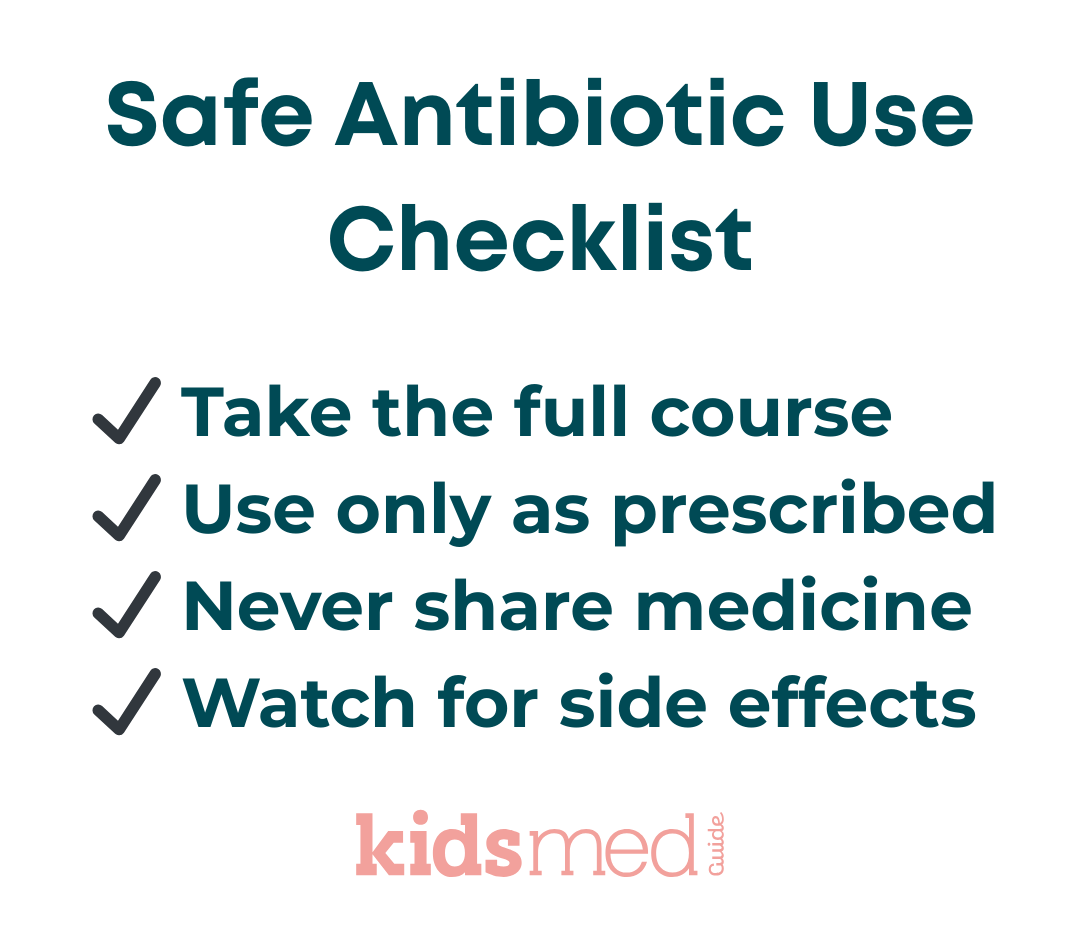
Treating Viral Sore Throats and Illnesses
When a virus, rather than strep, causes a sore throat, it can honestly be a little frustrating because there’s no easy antibiotic cure. There are some things you can do to help your child feel better.
- Hydration: Water, soup broth, popsicles, diluted juice, Pedialyte® drinks or pops
- Rest: Good sleep and plenty of downtime and naps help the immune system kick a cold faster
- Honey: Tea or warm water with honey (for kids over 1 year only) can soothe the throat
- Medication: Acetaminophen or ibuprofen can help with more severe pain or fever

Conclusion
Germs spread easily in the fall. Strep throat becomes common during colder months, especially when the weather drops and kids go back to school and sports. Many viruses also circulate, and many can cause sore throats. However, for strep throat and other early fall infections, antibiotics should only be used when really needed.
The main points are:
- Know the symptoms of strep throat and get your child tested if you think they have it.
- Use antibiotics exactly as prescribed.
- Support your child’s illness with rest, hydration, and fluids when antibiotics aren’t needed.
FAQ Section
How do I know if my child has strep throat?
Only a rapid strep test, molecular test, or throat culture can confirm. Symptoms such as a sore throat, fever, and white patches may raise suspicion, but testing is necessary.
When should antibiotics be given for strep throat in kids?
If a test confirms strep throat, your pediatrician will prescribe antibiotics. They should not be given for viral infections like colds or the flu.
Can antibiotics prevent complications from strep throat?
Yes, using antibiotics to treat strep throat helps prevent serious complications like rheumatic fever.
What should I do if my child misses a dose?
Take the missed dose as soon as you remember, unless it’s close to your next scheduled dose. In that case, skip the missed one. If you're unsure, contact your pharmacist or healthcare provider for guidance.
How can I prevent antibiotic resistance in my child?
Follow the prescription exactly, never share antibiotics, and avoid using them unless advised by a doctor. This will help protect your child and the community.
The following references were used to compile this information:
Group A Streptococcal (Group A Strep) Infections. (2022, December 19). HealthyChildren.Org. https://www.healthychildren.org/English/health-issues/conditions/infections/Pages/group-a-streptococcal-infections.aspx?_gl=1*1lht0zp*_ga*MTYxMDY4OTIyMy4xNzU3ODk1NzI3*_ga_FD9D3XZVQQ*czE3NTc4OTU3MjckbzEkZzEkdDE3NTc4OTU3MzgkajQ5JGwwJGgw
ID NOW STREP A 2. (n.d.). Retrieved September 14, 2025, from https://www.globalpointofcare.abbott/us/en/product-details/id-now-strep-a-2.html
Shulman, S. T., Bisno, A. L., Clegg, H. W., Gerber, M. A., Kaplan, E. L., Lee, G., Martin, J. M., & Van Beneden, C. (2012). Clinical Practice Guideline for the Diagnosis and Management of Group A Streptococcal Pharyngitis: 2012 Update by the Infectious Diseases Society of America. Clinical Infectious Diseases: An Official Publication of the Infectious Diseases Society of America, 55(10), e86–e102. https://doi.org/10.1093/cid/cis629
Strep Throat, Sore Throat or Tonsillitis: What’s the Difference? (2022, March 18). HealthyChildren.Org. https://www.healthychildren.org/English/health-issues/conditions/ear-nose-throat/Pages/The-Difference-Between-a-Sore-Throat-Strep-and-Tonsillitis.aspx?_gl=1*zm09d4*_ga*MTYxMDY4OTIyMy4xNzU3ODk1NzI3*_ga_FD9D3XZVQQ*czE3NTc4OTU3MjckbzEkZzAkdDE3NTc4OTU3MjckajYwJGwwJGgw
Updates. (n.d.). Antimicrobial Resistance. Retrieved September 14, 2025, from https://www.idsociety.org/ID-topics/special-topics/antimicrobial-resistance/

